-
1 of 253523 objects
Admiral Horatio Nelson, 1st Viscount Nelson, Duke of Bronte (1758-1805) 1833-35
Marble | 98.0 x 63.0 x 47.0 cm (whole object) | RCIN 69609
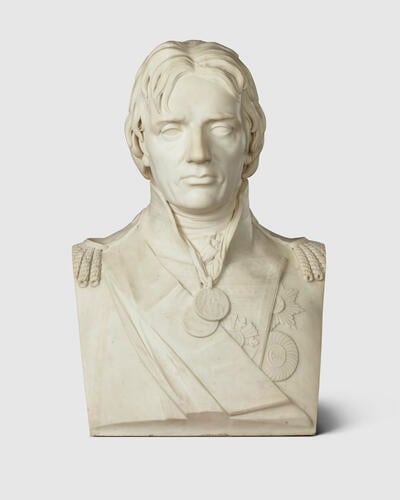
Sir Francis Chantrey (1781-1841)
Horatio Nelson, 1st Viscount Nelson, Duke of Bronte (1758-1805) 1833-35
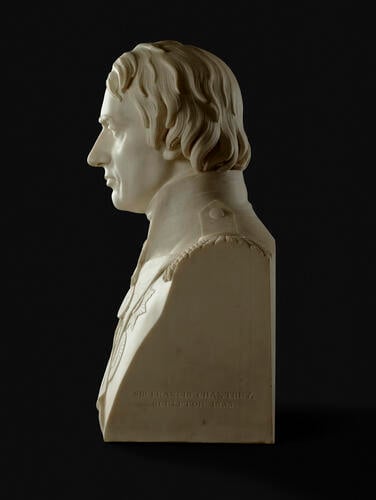
Sir Francis Chantrey (1781-1841)
Horatio Nelson, 1st Viscount Nelson, Duke of Bronte (1758-1805) 1833-35
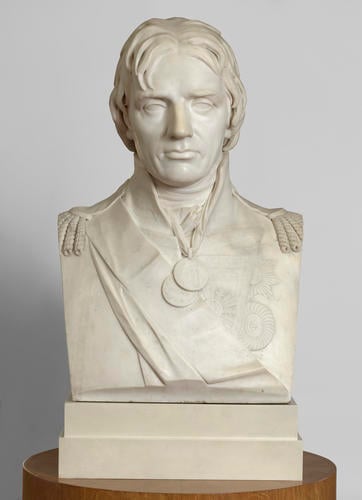
Sir Francis Chantrey (1781-1841)
Horatio Nelson, 1st Viscount Nelson, Duke of Bronte (1758-1805) 1833-35
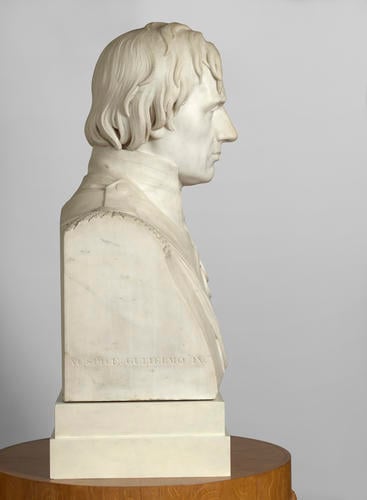
Sir Francis Chantrey (1781-1841)
Horatio Nelson, 1st Viscount Nelson, Duke of Bronte (1758-1805) 1833-35
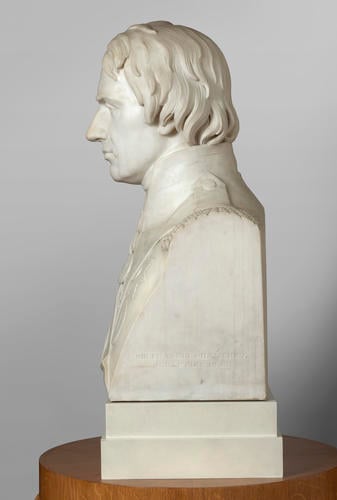
Sir Francis Chantrey (1781-1841)
Horatio Nelson, 1st Viscount Nelson, Duke of Bronte (1758-1805) 1833-35
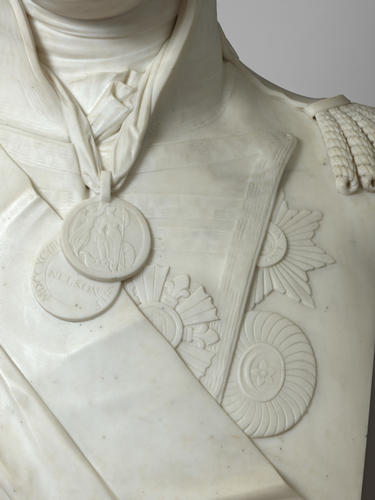
Sir Francis Chantrey (1781-1841)
Horatio Nelson, 1st Viscount Nelson, Duke of Bronte (1758-1805) 1833-35






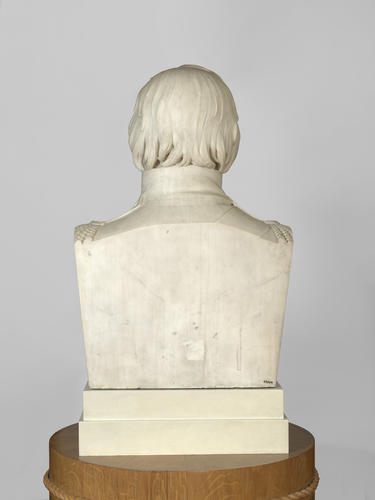
-
A colossal marble herm-bust with a severe slanting truncation to the shoulders, roughly rectangular at the base. The back is entirely solid, vertical and smooth. The sitter's head and gaze face directly forward and slightly downwards. The thick hair is carved in bold waves with a central parting, and with two locks hanging over the deep forehead to touch the sitter's right eyebrow. One of these locks has a loss of marble towards the end. At the back, the hair touches the high collar in several places. The thick eyebrows cast the deep eye sockets into shadow. The sitter wears the uniform of rear admiral with one shoulder star, and the epaulettes are truncated at the shoulders. Over the sitter's right shoulder are the sashes of the orders of the Bath and St Ferdinand, and the stars of the Bath, St Ferdinand and the Crescent are worn on the left lapel and left breast. Two naval gold medals, for the battles of St Vincent (above) and the Nile (below) are suspended by ribbons round the neck and overhang the sashes in the centre.
This superb bust combines genuine 'Mount Rushmore' monumentality with the realistic depiction of contemporary uniform and orders, and at the same time, in details such as the tousled hair and overlapping the high collar, a sense of Romanticism. William IV who commissioned the work was a firm believer in military commemoration; the present bust was the largest and held centre-stage in the Queen's Guard Chamber which became something of a naval and military Hall of Fame. The bust was originally placed on a battle-scarred fragment of the foremast of HMS Victory (RCIN ), on which Nelson was fatally wounded at the Battle of Trafalgar, 21 October 1805. This combination dominated the room from an overall height of nearly three metres. Such prominence must have been due to the fact that William IV, when Prince William Henry and later Duke of Clarence, was well acquanted with Nelson, first meeting him in 1782. Nelson became his ADC in 1786, and William gave away Francis Nesbit when she married Nelson on the island of Nevis in 1787.
Text adapted from Sculpture in the Collection of His Majesty The King (2025)Provenance
Commissioned by William IV in 1833; completed in 1835 and delivered in April 1836 (£262.10.0 Chantrey Ledger, 256b); placed in the Queen's Guard Chamber, Windsor Castle; placed on long-term loan to the United Service Institute Museum, Whitehall, 1901; transferred to the National Portrait Gallery, 1963; returned to Windsor Castle, 2002.
-
Creator(s)
Acquirer(s)
-
Medium and techniques
Marble
Measurements
98.0 x 63.0 x 47.0 cm (whole object)